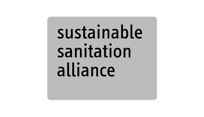For the safe storage of household waste, different storage containers are appropriate depending on the context. Containing either segregated fractions or mixed waste, they are an important interface between households and waste collection and transport (chapter C ). Waste workers empty them into collection vehicles or householders empty them into communal storages.

Adequate and safe waste storage at a household level is an essential element in the SWM service chain. It prevents the spreading of waste into the immediate surroundings of households, separates waste from contact with humans and animals and restricts environmental pollution from waste. Waste segregated at source requires one container for each segregated fraction. Containers are either picked up at households and emptied by waste collectors, or householders carry containers to a communal/shared storage facility S.2 to empty. A variety of storage containers may be appropriate depending on material availability and the local context. Existing vessels, containers and bins can be repurposed and adapted for waste storage. Storage containers must enable convenient usage and their volume must align with the types of stored waste, the amounts generated and the collection and/or emptying frequency. Full vessels still need to be portable and liftable.
Design Considerations
Storage vessels should be durable, washable and convenient to use. Tapered shapes facilitate emptying. Handles facilitate carrying. Well-fitting lids reduce human exposure to waste, prevent access by disease vectors and reduce the potential leakage of waste into the environment. Clear marking of containers highlights their intended use. Waste separation P.2 at source requires colour-coded and marked containers for each waste fraction. Containers with holes or mesh structures should not be used as they allow the leakage of liquids and waste. The lining of storage containers with plastic bags is feasible to avoid leakage and facilitate emptying. The total weight of a full container should not exceed 20 kg to allow carrying; dense and heavy organic waste will require smaller-sized containers. Depending on the amount of waste generated and emptying frequency, it may be possible to use multiple small containers.
Materials
Ideally, storage container materials are durable, low-cost, non-corrosive and UV-resistant. If hot ash is deposited, materials also need to be heat-resistant. Prefabricated bins made of plastic or steel are appropriate. Short-lived materials such as cardboard are not ideal as they break easily or leak. Lining hard-shell containers with removable plastic bag liners helps to keep bins clean and facilitates emptying but should not be used to store segregated organic waste as it disrupts organic waste recycling.
Applicability
Household storage can be implemented in rural, urban and camp settings. It can be collected from households or communal storage. Regular and reliable waste collection, an area-wide distribution of storage vessels and the corresponding training of households is required. During, or shortly after emergencies, the use of household storage containers might be challenging. Supplying single-use plastic bags in combination with Communal/Shared Storage S.2 may be more practical.
Operation and Maintenance
Householders must use and maintain their waste storage containers and either hand them over to waste collectors during collection or carry them to the communal storage facility for emptying. Storage containers require maintenance through washing and repair or replacement. Collection from households may require waste operators to enter premises, which might be inappropriate for male collectors in some contexts.
Health and Safety
Household storage must be safe for both household members and waste collectors, which means minimal exposure to waste. Regular cleaning of bins is required. Unsanitary double usage of waste containers (such as alternating use between food and waste) must be prevented. The weight of a full storage container should allow easy lifting and emptying by household members and waste collectors. Waste collectors must wear personal protective equipment when carrying and emptying waste storage containers and be trained in occupational health and safety X.4.
Costs
The cost of a household waste container depends on its material and availability. Ideally, procurement or production is done locally. If containers are provided to households free of charge, the total costs depend on the container unit cost, number of served households and number of vessels per household (in cases of waste segregation). A reserve of 20% of containers should be available for additional distributions and equipment replacement. Prefabricated bins from plastic and galvanized steel tend to be more expensive. Durable vessels with long lifespans can reduce the need for regular replacements. Compared to the cost of waste collection, processing and disposal, the cost of containers is typically low.
Social Considerations
The correct use of household waste storage requires household members to be trained, especially if new waste management practices are being introduced X.6. Training should include correct container use and maintenance and explain how the storage management practice is linked to the waste collection system. It should highlight the public health and environmental risks of unmanaged waste. The value and cost of storage vessels must be appropriate relative to people’s living conditions, income or cash assistance to reduce the risk of resale or alternative use for storing higher-value products such as food. Whenever possible, households should participate in the selection of suitable waste storage containers X.2. The needs of vulnerable persons, including the elderly and people with disabilities, must be considered X.9.
Key Decision Criteria
Input Products
Organic Waste
Organic Garden/Wood Waste
Organic Food/Kitchen Waste
Recyclables
Plastics
Paper and Cardboard
Metals
Glass
Textile
Mixed Waste
Residual Waste
Output Products
Organic Waste
Organic Garden/Wood Waste
Organic Food/Kitchen Waste
Recyclables
Plastics
Paper and Cardboard
Metals
Glass
Textile
Mixed Waste
Residual Waste
Response Phase
Application Level
Management Level
Space Required
low
Technical Complexity
low
Objectives & Key Features
Safe waste storage at household level
Strength & Weakness
- Can help to contain waste at the point of generation
- Can facilitate the segregation of waste at source
- Strongly depends on community participation and reliable and regular waste collection
- Risk of vessel resale or alternative use
Selected References
Key design features of household strategy
UNEP (2005): Solid Waste Management, United Nations Environment Programme, Kenya






